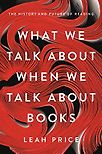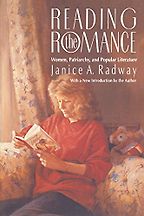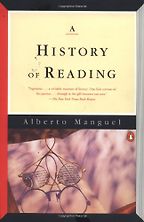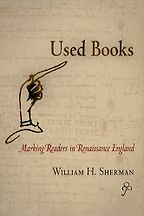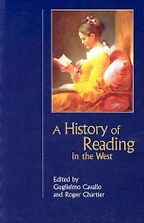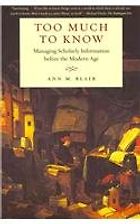What exactly do you mean by the history of reading?
This is a growing field that encompasses very different kinds of questions. When did human beings first become literate? Who was able to read in different societies – men or women, adults or children, masters or slaves? Who could read, who did read, and did they read Bibles or novels or newspapers or train schedules? The more interesting question, and the one that’s harder to answer, is what people made of what they read.
People who write leave evidence. People who read don’t. When a historian of reading gets very lucky, once in a lifetime, she manages to unearth a diary or a letter in which someone describes whether they loved or hated the book they were reading, and what they loved or hated about it. But most of the time you have to make do with a patchwork of contradictory clues.
For example, Ernest Hemingway had this to say about James Joyce: “I like him very much as a friend and think no one can write better, technically. I learned much from him.” But if you look at Hemingway’s copy of Ulysses, which is kept today in a library in Boston, you see that the first and last pages are the only ones that have been cut. So you can’t always trust people to tell the truth about their own reading. What makes it fascinating and also frustrating to study is that reading is one of the most private things we do.
Reading habits may have changed down the years, but one stereotype remains – that women enjoy romance books. What does your first author Janice Radway have to say on the subject?
Her book launched a revolution when it appeared in 1984, because her feminist argument took its case study from a kind of reading that both literary critics and feminist activists despised. Academics and activists had disagreements of their own, but the one thing that they would have agreed on was that romance novels churned out by Harlequin or Mills and Boon were beneath any serious person’s notice.
Yet this is an academic book, so why did Radway think romance novels were worth studying?
Radway’s innovation was that, rather than analysing the language of romance novels as most scholars would have done, she started by looking at the language of their readers – the way the women who read these books talked about them. This is essentially an ethnographic study. Radway interviewed a large swath of women who were self-identified romance readers from the Midwest of America. The surprising thing that emerged from these interviews, which Radway herself would probably not have predicted, was that even though the content of these romances was the furthest thing in the world from feminism, nonetheless the way in which readers used these romances could actually be seen as a feminist act.
How so?
Even though the novels picture women being ravished by tall, dark, handsome and rich strangers, what the readers whom Radway interviewed say over and over again is that “when I’m reading the book my husband and children know not to bother me”. Though the heroines are powerless, reading their stories enabled women to carve out personal space and time for themselves, almost in the same way in which if you are riding the subway in the morning you unfurl a newspaper to keep other people from meeting your eye. Reading is one of the things that women saw as for themselves in a life that otherwise involved taking care of others.
What I love about the method of this book is that it shows how different a book can appear depending on whether you are analysing its content or the people who read it. Even ordinary readers can be quite active in deciding what to make of the text that they read. Everyone thought these housewives were passive dupes of the patriarchy, but Radway showed them twisting romance novels to suit their own purposes.
There has been a rise in people reading romance due to the popularity of the Kindle, which means they can read them in a public space without people seeing the cover. Is that something you have come across as well?
The erotic novel Fifty Shades of Grey has been a hit partly because you can buy it on your Kindle rather than slinking in to your local pornography shop. That said, e-readers [and new technology] work in both directions – on the one hand they mean you can read discreetly and anonymously, without displaying to everyone else on the subway car what your literary taste is, but on the other hand if you go on Facebook you can see exactly what your friends are reading. So you could compare e-readers [and new technology] either to a brown paper wrapper or a digital coffee table, the self-presentation that people want to display to the world.
Next you have gone for a book about the history of reading by the Argentine writer Alberto Manguel.
This is the book with which general readers who are curious about the history of reading should start, because of its very accessible essayistic narrative. It offers a sweeping overview of the history of reading. One of the issues that comes up in it is the shift from reading aloud to silent reading. In classical antiquity, silent reading was more or less unknown. There is an anecdote from the fourth century of someone watching another person looking at the page without his lips moving and not understanding that the person was reading, because it was assumed that the only way you could read was to voice the words.
Why?
Writing worked differently until the Middle Ages, beginning with the fact that words were not separated. You didn’t have spaces between words, and if you are looking at a page where the words are all run together it’s quite hard to decipher it until you read it aloud. Tryityourselfandyouwillseehowharditis. Also, all the punctuation until the Middle Ages indicated vocal rhythm – where a reader would pause for breath – rather than grammatical structure. So early texts are pretty much impossible to read unless you read them aloud.
That said, Manguel is also very interesting about the ways in which reading aloud persisted. One of the loveliest examples he has of this is his account of professional readers who were hired to read stories aloud to workers in cigar factories in Cuba at the end of the 19th century, while they were rolling cigars. This is, of course, in the days before radio! So the first audiobooks were human beings. Manguel was writing before e-readers that offer a robotic-sounding text-to-speech option, but not that much has changed. Politicians are still using teleprompters, and professors like me are still reading our lectures from notes, which students turn back into notes of their own.
“Early texts are pretty much impossible to read unless you read them aloud.”
Your book, How to Do Things with Books in Victorian Britain, also gives an interesting angle to the history of reading and Victorian attitudes to books.
I wrote this book because I was curious about what people can do with books besides read them. If you think about it, most books spend most of their lives sitting on the shelf unopened. Some never get read. What I argue in my book is that even when books are lying on the shelf, they still mean something. A book could mean one thing to someone who is reading it and making furious notes in the margins, another thing to someone who puts it on their coffee table in order to impress their visitors with their good taste, another thing to someone who hides behind it on his morning commute, and something else again to the lady who matches the binding of the book to the ribbon on her bonnet – not to mention to the servants who dusted the books but weren’t supposed to open them.
Then you had the tradesmen who would have bought old books from richer people and used them to wrap butter and cheese in. Until new technologies made paper cheaper in the 19th century – which is the first time that anyone thought of making toilet paper or paper bags – even people who were illiterate often had a very intimate relationship with books, and used them in all sorts of ways in their daily lives. People knew which daily newspaper worked best to stuff up the chinks of windows, and which one was better to use in the privy.
In the 21st century many of us suffer from information overload, but Ann Blair’s new book Too Much to Know shows that the invention of the printing press in the 16th century led to similar feelings of stress.
One of the interesting things about this book is that it forces us to question the self-pitying sense in which we think we are more deluged by information than anyone was ever before. Ann Blair shows that every generation has felt just like this. The book pushes our sense of information overload backward to the period between around 1500 and 1700, and it describes solutions people found to that sense of panic in the face of too many books.
What kind of solutions do they come up with?
Ironically it shows this was a case of fighting fire with fire. Readers’ response to having too many books to deal with was to produce more books, in particular reference books which served as an index to or digest of other books. For example, you would read a dictionary as a way of avoiding having to read all the books on which it was based. The reference books that she describes were the ancestors of Cliffs Notes or Reader’s Digest.
So what can we do about information overload in our own times?
One of the things that I enjoy about being an historian of this field is that you pick up some of the tricks that were used in the past to combat this problem. For example, Ann Blair talks about kinds of furniture that were used to deal with information overload. A “bookwheel” was like a miniature Ferris wheel where each book rides in a kind of platform. Each of them is lying open at the page you want and if you want to move from one book to another, you just give the wheel a spin and it’s right in front of you at the appropriate page. I would love to have something like that.
She also talks about the history of the written slip, which is the ancestor to the index cards invented in the 19th century. Scholars would have something like a clothes line hanging up, with slips of paper strung along it. It is so helpful to think about information in spatial terms. I still print documents out and arrange them on my desk as if I were playing solitaire.
William Sherman’s Used Books: Marking Readers in Renaissance England examines our changing attitudes to how we treat the books we read.
The subject of this book is marginalia – what readers write in the margin and how readers underline and annotate books. Sherman describes a big historical shift. We tend to see writing in books as an act of defacement. For example, if you return your library copy of Sherman’s book with passages that have been highlighted you will receive a hefty fine. But readers in the Renaissance thought that if you didn’t leave notes in the margin of a book then you were being lazy and passive, because you weren’t doing the job of engaging with the text and answering back to it.
Sherman showed that until two or three hundred years ago, children were taught how to write in books. There were very conventional systems of how you were supposed to take notes in the margins. At the same time, until wood pulp was used in paper making in the 19th century paper was a very expensive commodity, and because people didn’t have scrap paper lying about, books became a useful source of raw material. So you find books with shopping lists written in the front, or spaces where people practised their handwriting.
In fact, if you look at copies of children’s books from before about 1800 you don’t usually find annotations in the margin about the content of the book. Instead you see things like a child’s name written over and over, because they are practising their signature. Or in a few touching cases you find a girl’s first name with a different last name, and it is clear she is thinking about what her married name will be because there is a boy she likes.
But this is also one of the frustrating things for scholars who work on the history of reading, because we often hope that by looking at which passages are underlined, or comments in the margins of old books, we will gain a greater insight into how those first readers of some important literary work responded to it. In reality their marginalia is often completely unrelated to the content of the book. Today, on the other hand, you can see which passages are most often highlighted by Kindle users by simply going to the Amazon website, and if they archive this data they will make life much easier for future historians.
Finally, you have chosen A History of Reading in the West.
Where Manguel’s book is a very readable and accessible introduction to the history of reading, this book is a more scholarly anthology of articles by experts in every different historical period. Taken together, these articles trace chronologically the ways in which reading has changed, starting with reading aloud in classical Greece to the shift from the scroll to the book in the Roman world. Then you have the growth of silent reading in the Middle Ages. One of the continuities that emerges is the sense that reading progressively becomes less embodied. Roman writers talk about reading as a healthy form of physical exercise, because you read standing up and you use your voice. Whereas today we often think of it as a virtual out of body experience.
Reading about these different historical periods, you can also see reading move indoors. In Greece and Rome, people read in gardens, in public squares and in the street. In the Middle Ages the place of reading shifted to monks’ cells, to churches and to courts. And then in the modern age the space of reading shifted again once rail travel was invented. That gave people a whole new window of opportunity for reading – reading in a horse-drawn carriage would make you nauseous, but trains are smooth and well lit. Reading became public once more.
July 4, 2012. Updated: October 12, 2025
Five Books aims to keep its book recommendations and interviews up to date. If you are the interviewee and would like to update your choice of books (or even just what you say about them) please email us at [email protected]
Support Five Books
Five Books interviews are expensive to produce. If you've enjoyed this interview, please support us by donating a small amount.

Leah Price
Leah Price is professor of English and chair of the history and literature programme at Harvard University. One of the topics she specialises in is the history of books and reading. Her own new book is How to Do Things with Books in Victorian Britain

Leah Price
Leah Price is professor of English and chair of the history and literature programme at Harvard University. One of the topics she specialises in is the history of books and reading. Her own new book is How to Do Things with Books in Victorian Britain

